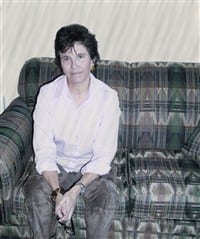Our House Cancer House Of Hope Expands Into Springfield, Offers Support To Western Mass.
Every staff member, volunteer, and visitor to the Cancer House of Hope has had their lives touched by cancer in a profound way.
That, in essence, is the Cancer House of Hope’s very reason for being. And in May, the Westfield-based organization will complete its first expansion, opening a second location in Springfield.
“Our reason was simple: we wanted to be available for a greater number of people,” said the Cancer House of Hope’s executive director, Keitheley Wilkinson.
The original House opened its doors eight years ago, after Westfield resident Gaetana Aliotta, diagnosed with breast cancer in 1995, realized there was a community-wide need for supportive services. With Aliotta’s vision in mind, Noble Hospital donated a facility, and the Cancer House of Hope began offering support services and educational resources for people experiencing cancer at all stages, free of charge, with the continued support of Noble and several area businesses.
“We provide programs that serve the entire spectrum of the cancer experience,” said Wilkinson, who has been with the Cancer House of Hope since its inception. “That is one of the ways we are unique.”
The business is also unique in that it is true to its name, designed to feel, Wilkinson says, like you’re walking into a friend’s home.
The Springfield House, located on Plumtree Road in the city’s Sixteen Acres section, will be much the same as the Westfield location. All of the new House’s rooms will be arranged and decorated like any room in a traditional home, with coffee tables, overstuffed couches, and plenty of natural light, and all services will be offered within a setting devoid of any clinical feel, just as they have been in Westfield since 1997.
The various support groups developed through the Cancer House of Hope were formed with several different sets of people, and the specific issues they face, in mind. While some general groups for men and women still meet, others include only the recently diagnosed, breast cancer and leukemia and lymphoma survivors, people at the end of treatment, or people with advanced cancers, for instance. Others cater to just families and friends. In addition, relaxation classes such as yoga or Reiki are held, and a resource library, which will also grow, is available to the public.
Making a House a Home
Wilkinson said the Springfield expansion also offers an opportunity to explore new programs and services that might benefit the House of Hope’s visitors, including the Latino population that will be able to take advantage of classes and groups that will be held in Spanish, and programs that will emphasize on the issues that face Black Americans with cancer.
The project has already received support from the Springfield community, and Wilkinson and her staff look forward to serving a new set of visitors to the Cancer House of Hope.
“We’re going to start off slowly, but I expect the new location will see more traffic, and become more of a drop-in center for people traveling to and from the doctor,” she said.
In preparation for the facility’s opening in May, Wilkinson said she is collaborating with Springfield businesses, including Baystate Medical Center and Mercy Medical Center, leading a marketing push to get the word out, and planning a busy year of fundraisers to offset costs, ranging from an ‘Evening of Laughter’ with author and humorist Gina Borecca and the ‘Tee it Up Fore the House’ golf tournament.
“Most people hear about us from family or friends,” she said, “but we’re making a big push now because this is a big move.”
The Springfield Cancer House of Hope’s arrival will be best heralded, however, by an event brainstormed by the Junior Women’s League of Greater Springfield. Borrowed from the successful interior design reality shows currently dominating the airwaves, the league has commissioned four area designers to each complete one room in the House and ‘compete’ against each other for top honors. On April 9, the designers will enter the house and finish their assigned rooms that day, showcasing their own styles while still honoring the cozy, welcoming feel that Wilkinson said is essential to the House of Hope’s core vision.
Not only will the event serve as an unusual way to market the expansion, she said, but the house will be ready for business in a fraction of the time.
“Each designer has been given a budget to stay within, and they are being encouraged to stay under budget, because anything left over will go to us,” Wilkinson explained.
House Guests
And that financial support is key, she said, to continuing quality programming at both locations.
Since its inception, more than 800 people have taken advantage of programs held at the Westfield House alone, and dozens more have utilized the facility’s resources. To maintain programs for a growing number of visitors, Wilkinson said partnerships were formed with several area businesses, which continue to bolster operations.
The Westfield YMCA, for example, donates 10 free memberships each year to the House of Hope that cancer patients can use during periods of recovery. Noble Hospital, after donating the Westfield space the House of Hope uses, continues to pay for the House’s utilities. Woronoco Savings Bank makes an annual $50,000 contribution, and added another $50,000 to that figure this year, to aid in the Springfield expansion effort.
Countless others have pledged their support to the expansion, said Wilkinson, including Baystate and Mercy, Westfield Bank, and several national organizations that have provided grant funding – some unsolicited. A capital campaign is also underway, led by Tim Crimmins, President of the Bank of Western Massachusetts, with a $300,000 goal.
The People in the Neighborhood
Wilkinson reflected on why the House has garnered so much support in a relatively brief period of time, saying not only are the complementary support services offered through the organization important to the well being of people living with cancer and their families, but moreover, the community understands that.
“We’ve come a long way in a short time, and part of the reason for that, I think, is that everyone knows someone who has had cancer,” she said. “Everyone knows the story.”


